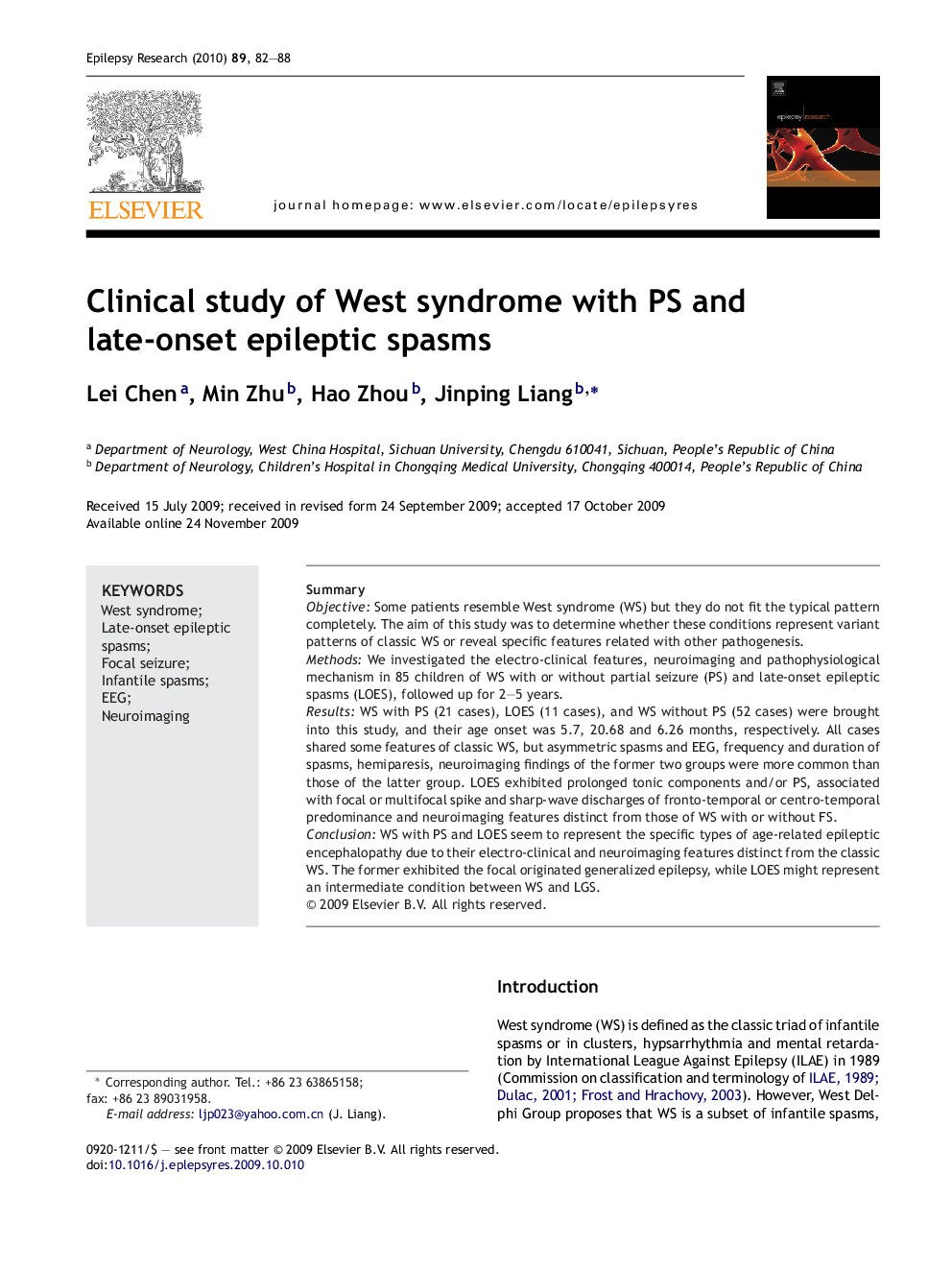| Article ID | Journal | Published Year | Pages | File Type |
|---|---|---|---|---|
| 3052722 | Epilepsy Research | 2010 | 7 Pages |
SummaryObjectiveSome patients resemble West syndrome (WS) but they do not fit the typical pattern completely. The aim of this study was to determine whether these conditions represent variant patterns of classic WS or reveal specific features related with other pathogenesis.MethodsWe investigated the electro-clinical features, neuroimaging and pathophysiological mechanism in 85 children of WS with or without partial seizure (PS) and late-onset epileptic spasms (LOES), followed up for 2–5 years.ResultsWS with PS (21 cases), LOES (11 cases), and WS without PS (52 cases) were brought into this study, and their age onset was 5.7, 20.68 and 6.26 months, respectively. All cases shared some features of classic WS, but asymmetric spasms and EEG, frequency and duration of spasms, hemiparesis, neuroimaging findings of the former two groups were more common than those of the latter group. LOES exhibited prolonged tonic components and/or PS, associated with focal or multifocal spike and sharp-wave discharges of fronto-temporal or centro-temporal predominance and neuroimaging features distinct from those of WS with or without FS.ConclusionWS with PS and LOES seem to represent the specific types of age-related epileptic encephalopathy due to their electro-clinical and neuroimaging features distinct from the classic WS. The former exhibited the focal originated generalized epilepsy, while LOES might represent an intermediate condition between WS and LGS.
